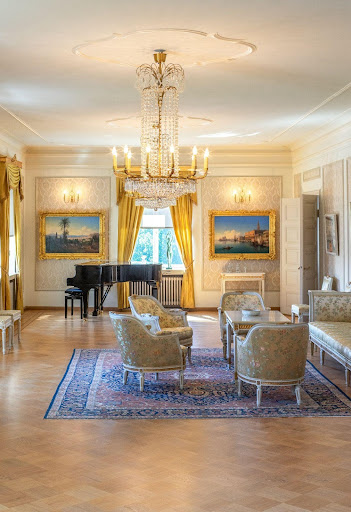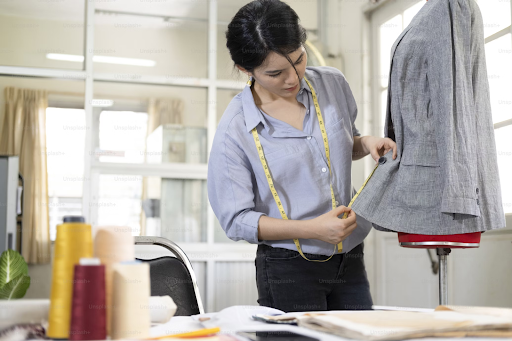Your home should be more than just a thousand bricks and a few pillars; it should feel like a home, your haven built to your tastes and stylistically congruent with the desires of the occupants. The evolution from house to home is a process that occurs over time as styles change and rooms repurpose. The decorating is a large part and defines how spaces are used.
We can do many things to change from a drab apartment to a world-class living environment. These changes can include furnishing, colour schemes, wall pictures, artefacts and many other accoutrements. In this article, we will be talking about the piano. (squibler.io) The piano is a beautiful instrument that you can easily incorporate into your home design.
Piano Types
Invented in the 1700s by Bartolomeo Cristofori, the piano is one of the most popular musical instruments worldwide and is often incorporated into the indoor decor. There is a range of colours, shapes, styles, and individual types.
Grand Piano
With a size and weight that has kept piano movers in business for hundreds of years, the grand piano is likely the type you’re most familiar with. This is the design you’ll see most often at concerts or within the orchestra. It is the most famous piano because of the excellent playing experience it gives the pianist, so if you’re after something that looks amazing and sounds fantastic, this could be your choice. Besides, you can start piano lessons in Australia, which will provide you with a strong foundation in understanding music fundamentals.
The grand piano gives any living space an elegant feel suited to those with luxurious tastes. There are two types of a grand piano; the baby grand piano and the concert grand piano. The baby grand piano may be suitable if you’re looking for aesthetics as it can easily fit in smaller spaces such as your living room. The concert grand piano has longer stringers and a larger soundboard, more suited for practical use.
Upright Piano
The upright piano is excellent if you don’t have the space for a grand piano; these types are typically used for practice or piano lessons. The upright piano works well against small to medium-sized walls instead of large open areas. They are less common for performance or orchestral use.
Digital Piano
The electronic piano is a modern-day creation that doesn’t use strings like the earlier acoustic pianos. It is also referred to as an electric piano. These instruments can create various sounds as they operate on a digital reproduction of programmed audio or samples. These are not as aesthetically pleasing as acoustic pianos and may not give off that luxurious vibe, but they are great fun to play if you’re musically inclined.
Integration
Now that you’ve decided on what kind of piano you need, you’re ready to decide how you want to integrate this piece into your household. This integration largely depends on the purpose of the piano and the type. There is no right or wrong answer as it depends on personal preference. Remember that you’ll need to match suitable locations to the pianos’ intended use.
Find the Right Space
Before even moving the piano into the house, we need to ensure the size of the space is adequate to accommodate the piano. To choose the most suitable room, we need to consider a variety of factors. The first is to ensure the room has enough natural and artificial lighting to provide a comfortable playing environment.
The living space, bedroom, study or studio are viable positions for your piano. This positioning largely depends on your purpose. If it’s something you’d like to use as an ornament or for entertainment, the lounge would be preferred. If you’re not interested in entertaining guests so much, you may want to consider the study or bedroom.
For grand pianos, large open spaces work best; usually, a lounge room or living area are popular choices as these are generally the largest spaces in the house. You wouldn’t want to hide grand pianos away as they are pretty beautiful spectacles. For upright pianos, on the other hand, smaller spaces seem to work better, but the compact design makes them flexible enough to be placed almost anywhere.
Choose the Right Colours
You want to ensure that you’re colour scheme is balanced, especially if you’re choosing something more significant such as a grand piano. This scheme is important because you want to room to be balanced. Having too much of one colour can throw off balance.
Pianos are usually black, brown or white, which are pretty standard colours in home decor. If you have a black room, a white piano would usually fit best, or if you have a white piano, a black or brown room will match. This creates balance in the room instead of having one colour dominate.
Decorate the Space
Once you’ve decided on the room and position and have a good colour scheme, you can start some minor additions to the space. These can be musical decorative pieces, lamps, paintings or clocks. Anything to enhance the room’s vibe that matches the piano can be entirely personal.
It is also popular to add small decorative items to the piano. You just need to ensure that they are not too heavy to remove because, at some point, you may need to tune or move the piano. You can try some vases, small potted plants, small picture frames or even stands to hold your music.
Conclusion
Now that you’ve got a good grasp on what it takes to decorate your room with a unique, functional and entertaining piece, it’s time to get creative. Once you’ve purchased and chosen your room, call the piano movers, get to work, and maybe learn a few songs.
Also, don’t feel obligated to follow every rule as your home will always be uniquely your own, but we think these tips may help you get a fantastic outcome with your new piano purchase.





